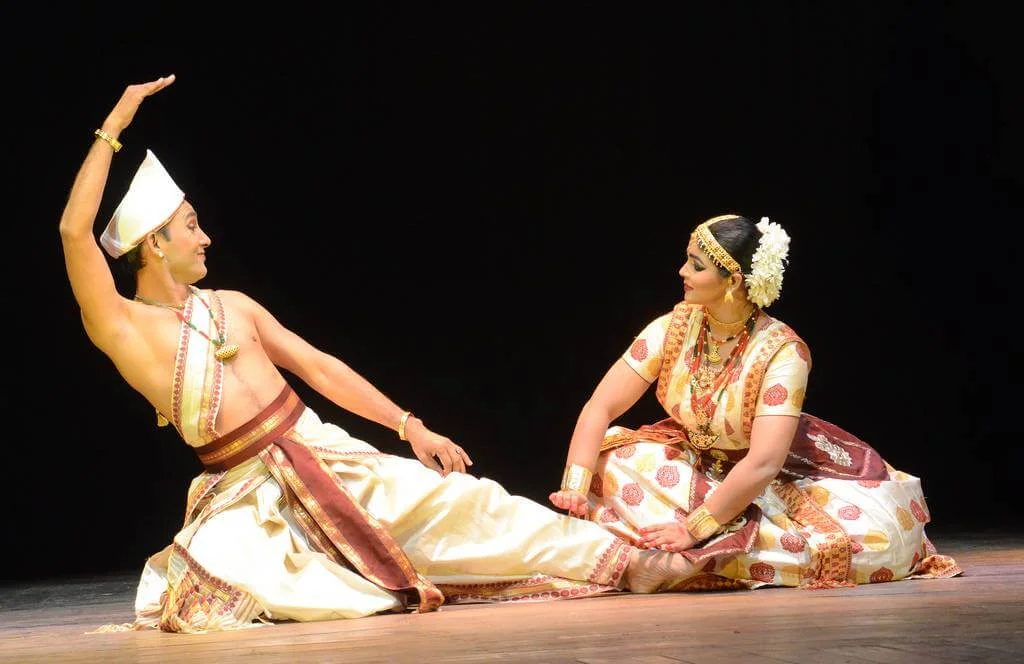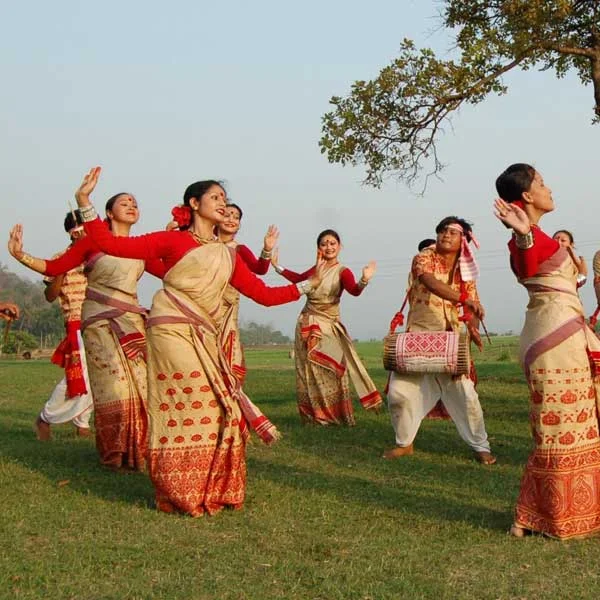Assam, the vibrant state nestled in the northeastern part of India, boasts a rich cultural heritage that is reflected in its traditional dance forms. The Assamese dance forms have evolved over centuries, blending tradition with contemporary influences.
The Essence of Traditional Assamese Dance
Sattriya Dance: A Sacred Offering

Sattriya dance, originating from the monastic traditions of the Vaishnavite Satras, holds a sacred place in Assam’s cultural tapestry. This classical dance form is characterized by its fluid movements, intricate footwork, and expressive gestures. Traditionally performed by male monks, the Sattriya dance narrates mythological stories and devotional themes.
Bihu Dance: Celebrating Life’s Rhythms

Bihu, the most celebrated festival in Assam, is accompanied by the lively Bihu dance. This traditional folk dance is a vibrant expression of joy and merriment, performed during the Bihu festival in April. The dancers, adorned in colorful traditional attire, showcase energetic movements and rhythmic footwork, capturing the essence of Assamese agrarian life.
Bagurumba Dance: Grace in Motion

Bagurumba dance, performed by the Bodo community, is a graceful display of synchronized movements and swaying gestures. This folk dance is dedicated to the worship of Bathou, the supreme deity of the Bodo people. The dancers, dressed in traditional Bodo attire, create a mesmerizing spectacle, embodying the spiritual connection with nature.
Contemporary Takes on Assamese Dance
Fusion of Tradition and Modernity
In the contemporary dance scene, artists are redefining Assamese dance forms by infusing them with modern elements. Fusion dance performances seamlessly blend traditional moves with contemporary choreography, creating a unique and captivating visual experience. This innovative approach attracts a diverse audience, bridging the gap between tradition and modernity.
Neo-Classical Influences
The classical dance forms of Assam have not remained static; they have embraced neo-classical influences. Young dancers are incorporating innovative techniques, experimenting with storytelling, and exploring new themes. This evolution ensures that Assamese dance remains relevant and resonates with a broader audience while preserving its cultural roots.
Global Collaborations
Assamese dance is no longer confined to regional boundaries. Contemporary artists are engaging in global collaborations, participating in international dance festivals, and exchanging ideas with artists from different cultures. This cross-cultural exchange not only enriches the dance forms but also promotes Assam’s cultural heritage on the global stage.
Preserving and Promoting Assamese Dance Forms
Cultural Institutions and Academies
To ensure the continuity of Assamese dance traditions, various cultural institutions and academies have been established. These institutions play a crucial role in training aspiring dancers, preserving the authenticity of traditional forms, and fostering innovation within the dance community.
Digital Platforms and Outreach
In the age of technology, digital platforms have become instrumental in promoting and preserving Assamese dance forms. Online tutorials, virtual performances, and social media campaigns contribute to a wider reach, enabling enthusiasts worldwide to connect with and learn about Assam’s rich cultural heritage.
Government Initiatives
Government support is vital for the sustenance of any cultural tradition. In Assam, various government initiatives focus on the promotion and preservation of traditional dance forms. Financial aid, cultural events, and infrastructural support contribute to the flourishing dance community in the region.
FAQs About Assamese Dance Forms
Is Sattriya dance only performed by male monks?
Traditionally, Sattriya dance was performed exclusively by male monks. However, in contemporary times, female artists have embraced this classical form, breaking gender barriers.
How does Bihu dance reflect Assamese agrarian life?
Bihu dance incorporates rhythmic movements symbolizing agricultural activities, such as plowing, sowing, and harvesting. The colorful attire worn by dancers represents the vibrancy of rural life in Assam.
Are contemporary Assamese dance forms losing touch with tradition?
No, contemporary Assamese dance forms are evolving while retaining a strong connection to tradition. Artists are actively preserving cultural roots while exploring new avenues of expression.
Assamese Dance: A Harmonious Blend of Tradition and Modernity
Assamese dance forms, rooted in tradition, have gracefully adapted to the changing times. From the sacred Sattriya to the lively Bihu dance, each form narrates a unique story of Assam’s cultural diversity. The fusion of tradition and modernity, coupled with global collaborations, ensures that Assamese dance continues to captivate audiences worldwide. As we witness the harmonious blend of ancient rituals and contemporary interpretations, the rhythmic heartbeat of Assamese dance resonates across generations, embodying a cultural legacy that stands the test of time.
